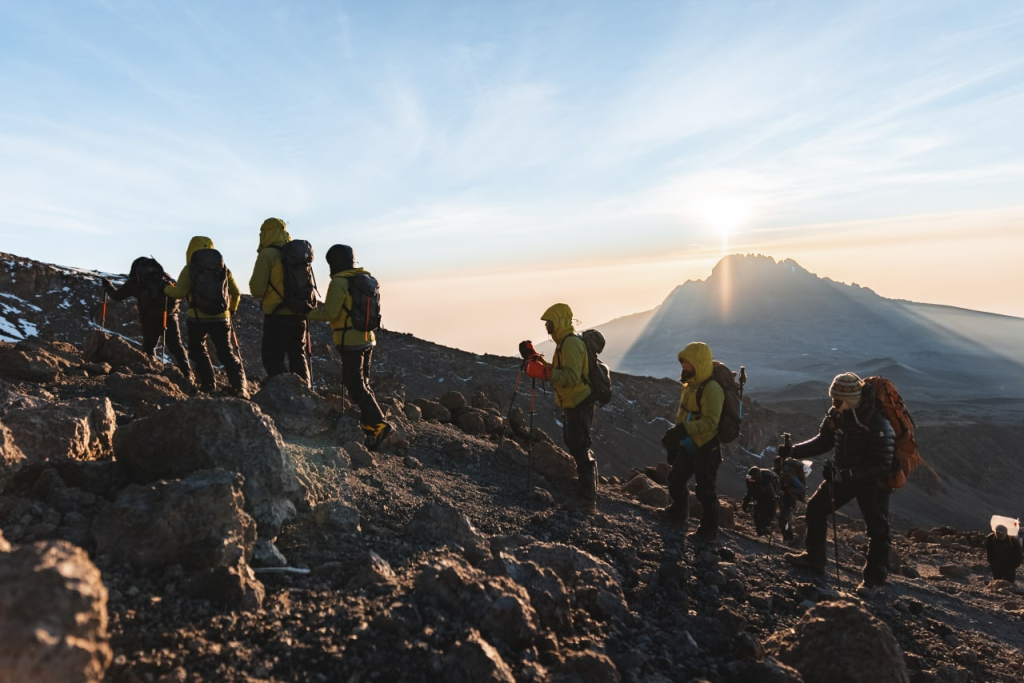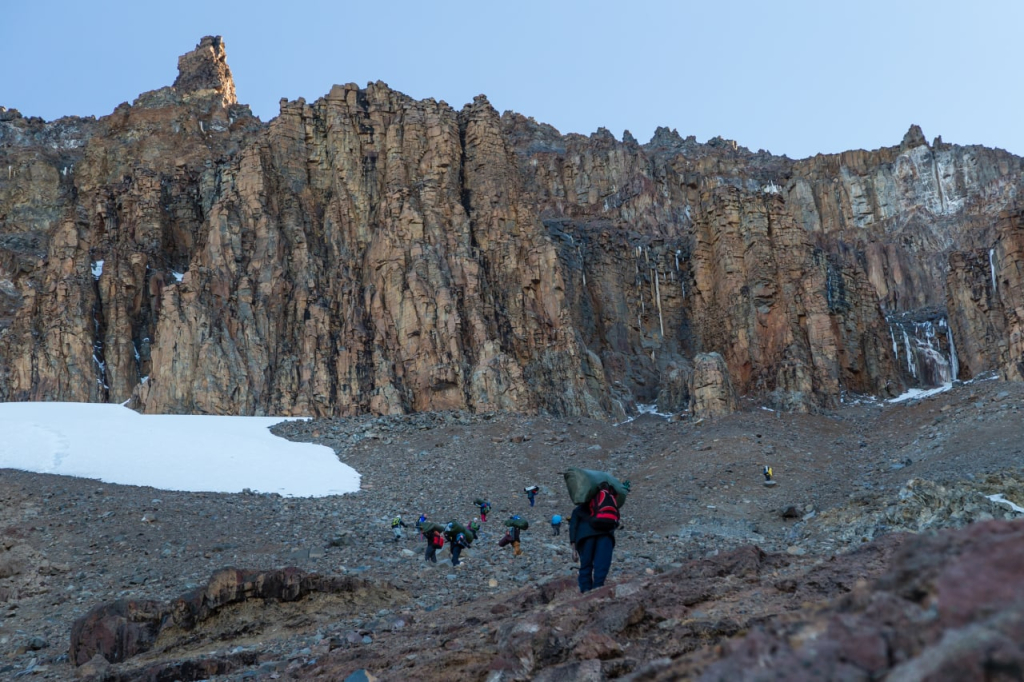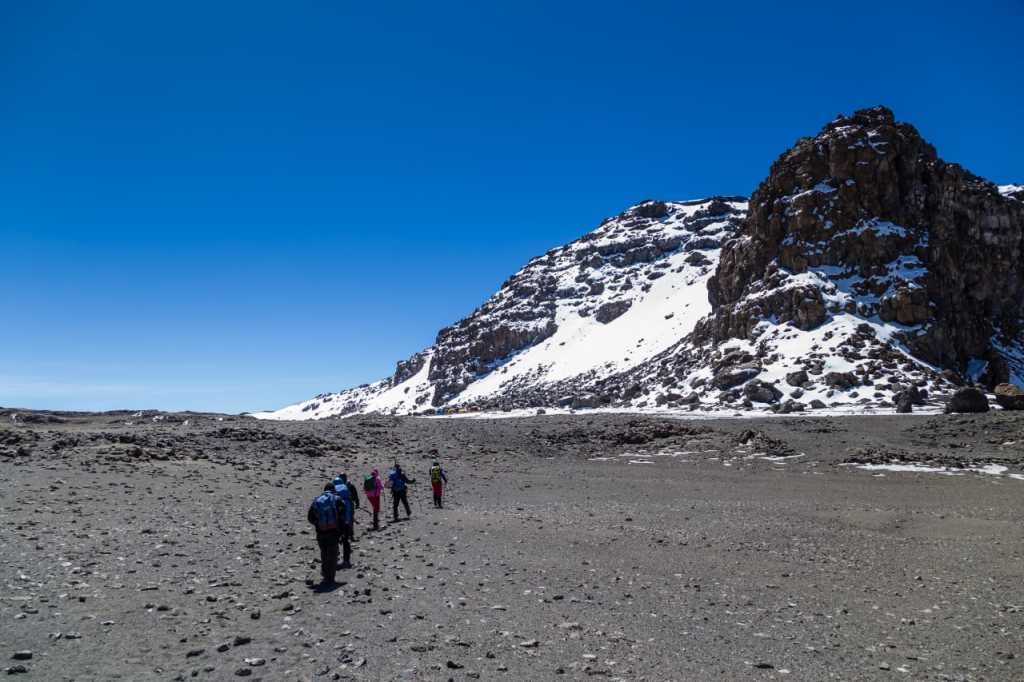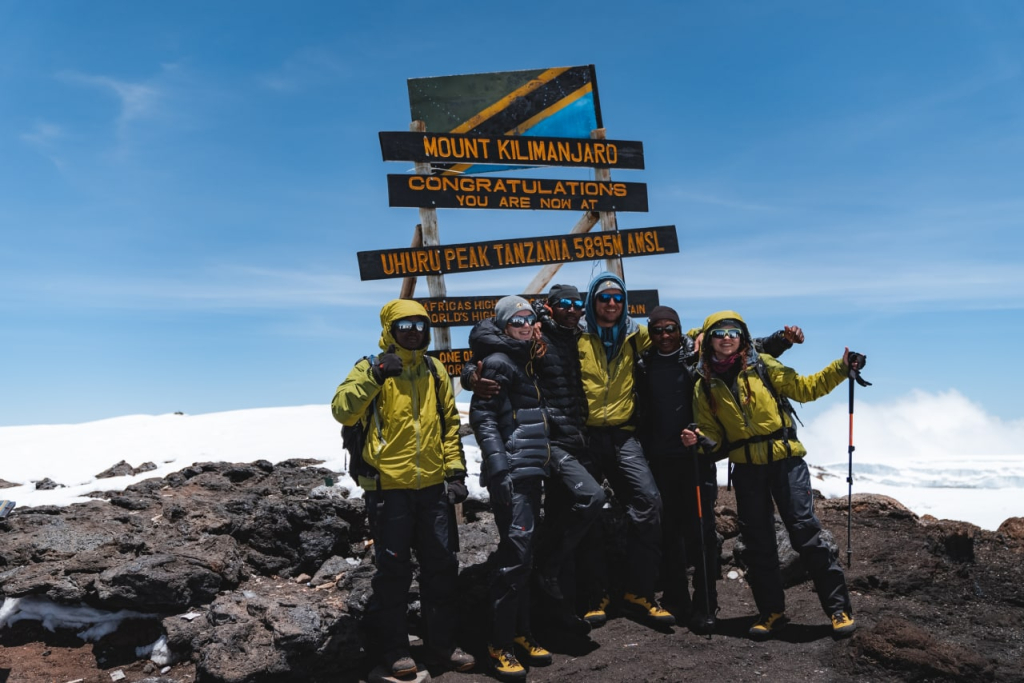Does Diamox really help against altitude sickness?
This post covers all the popular questions about Diamox, including:
Is it worth it to take Diamox on a climb? What is the optimal dose, are there any contraindications and how severe are the side effects?
This article was written based on the results of clinical research and years-long experience of Altezza Travel climbing Kilimanjaro.
Altitude Sickness
When rapidly gaining a considerable altitude, an unprepared person begins to experience discomfort associated with a lower amount of oxygen in every breath. The severity depends on many external factors and individual body reactions. Unless you have climbing experience and vast knowledge of your body's condition, no one can predict how you are going to feel on a Kilimanjaro trek.
Altitude sickness is a completely normal phenomenon indicating that your body is adapting to the changing conditions. It can range in severity from a slight discomfort such as dizziness, slight shortness of breath or palpitations to serious ailments requiring immediate evacuation and medical attention. The most severe form is known as acute altitude sickness, combined with both pulmonary and cerebral edema.
The traits of oxygen deficiency in some individuals may appear at an altitude of 6,561 ft (2,000 meters), although most often the first sensations are recorded at an altitude of 9842 ft (3,000 meters) and higher. For example, one of the most popular routes on Kilimanjaro, called Lemosho, actually starts at an altitude of 11,482 ft (3,500 meters) following an altitude drop–off by transport closer to the first camp. So you can feel the impact after only a hours after the start of the climb.
In most cases, up to ca. 13,123 ft (4,000 meters), a body is able to adapt on its own and rearrange the respiratory system to compensate for the lack of oxygen in the air. However, that there is not always enough time for this during the climb because the number of days are limited (which is why we suggest longer itineraries, to help you adapt to the altitude). Above 13,123 ft (4,000m), humans most often need assistance to cope with the lower levels of oxygen, such as: going at a reduced speed, frequent rest, drinking more water and careful monitoring of the state of health. You can also take prophylactic drugs, such as Diamox to help with the process of adapting to the altitude.
Helping Your Body to Acclimate
The most effective way to fight altitude sickness during climbing is smooth step-by-step acclimatization, which can be ensured through a long trek to the Kilimanjaro top - seven days is the recommended duration. The ideal route is to make during the day and spend the night at the lowest ascent point. Treks in the afternoon are good for smooth acclimatization: the climbers, having already overcome the day part of the route, walk a short distance at the same altitude or climb somewhat higher, and then descend to the camp before the night to rest.
At night, during sleep, the body adapts to the new conditions. Breathing may be interrupted for a short time. This is an unpleasant but common phenomenon. It is caused by a decrease in the carbon dioxide level in the body which the brain perceives as a signal to decrease the rate of breathing in order to accumulate the usual amount of CO₂. After holding a breath for a few seconds, a person wakes up feeling as if suffocating. This is one of the signs of the body's readjustment to altitude conditions.
It is also important to pay close attention to how you feel during daytime climbing - to find the best pace for you, and to notice the body's signals: labored breathing, a slight tingling in the chest, dizziness, deterioration of vision are all signs you should pay attention to. If you are experiencing these, you should stop trekking and have a rest. When you do begin hiking again, do so at a slow pace.A moderate pace during day ascents and gradual acclimatization over the course of enough nights on the hike nearly guarantee you a successful summit of Kilimanjaro. For this reason, we recommend long climbing programs of 7 days and more. Those climbing programs have the highest success rate.
The condition of your body before and during the climb contributes greatly to your success, as well.
Here is what defines a successful ascent: sleep well and sleep long enough; you should not be under stress and you should avoid drinking alcohol. During the ascent, you need to drink more water than usual, eat regularly and with proper nutrition, including high-calorie foods according to a mountain diet. It is also important to have the necessary clothes and shoes, in order to not to get too cold or wet, and protect yourself from the increased sun at the high altitude, as well.
Finally, pharmacological support for the body is a way to go: you can take Diamox tablets as preventive medicine. Based on many years of experience and supporting conclusions of actual studies, we recommend climbers take Diamox during their Kilimanjaro trek.
What Is Diamox
Acetazolamide is distributed under the trade name of Diamox. The drug is a carbonic anhydrase inhibitor, or in other words, an agent preventing the operation of ferments binding carbon dioxide with water during breathing. Thus, Diamox reduces the level of carbonic acid and slows down the CO₂ consumption, to level out the acid-base balance in your body.
Acetazolamide, the active substance of the drug, is by default a diuretic. The more frequent urge to visit the toilet during the ascent to Kilimanjaro is absolutely normal while taking this medication. This may be caused not only by the intake of Diamox but also by increased consumption of water due to physical activity. We remind you that increased consumption of water during mountain trekking is recommended: you should drink not less than 4 liters of water per day.
Diamox is prescribed for the treatment of cerebral edema and glaucoma, as well as other diseases and conditions, including the treatment of altitude sickness. Among the manufacturers' recommendations, there is also a prophylactic use against the development of altitude sickness.
When and How Much to Take
Diamox may be used for prophylaxis according to two schemes: when symptoms of altitude sickness appear and until they subside, or before the beginning of ascent and until its completion. The decision about prophylactic use should be made by each climber independently.
Usually, there are different opinions about using medications that result in two camps: "Better safe than sorry: a couple of pills will not make you worse" (the pro-camp) and "Let my body cope by itself, I will take pills as a last resort" (the more cautious camp).
Let's refer to the recommendations of for altitude sickness is indicated for anyone who climbs more than 1,640 ft (500 meters) in one day. Separately, in the case of climbing taking Diamox for prophylaxis is strongly recommended.
If you are not allergic to Diamox, we recommend taking 125 mg of Diamox in the morning before you begin your Kilimanjaro climb, and then 125 mg twice a day, every afternoon and morning, during the trek.. All Altezza Travel guides have a stock of the drug for every climber in their first-aid kits. Also, during the daily, mandatory morning and evening medical check-ups, they will offer it to climbers. The drug is included in the price of expeditions and does not incur additional expenses.
There is a low percentage of allergic reactions to the sulfonamide components of the drug. To find out if you are allergic to them, please consult your physician.
There is some debate about the dosage among high-altitude medicine practitioners. Still, the optimal recommendation is 125 mg of Diamox twice a day, in the morning and in the afternoon. Clinical studies have shown that an increased dosage to 500 mg per day, 250 mg per dose, is also effective for the prevention of acute altitude sickness. This increased dose is recommended for people whose body weight exceeds 80 kg. Doses above 500 mg per day are used for treatment.
Does Diamox Have Side Effects?
As with any drug, Diamox has several side effects of varying severity and varying degrees of investigation.
First of all, it should be noted that Diamox acts as a diuretic. It is perfectly normal if you go to the restroom more often during the days of taking the pills, although it does not always manifest itself. Also, the registered side effects include a slight tingling sensation on the skin.
All other side effects indicated for the drug are either rare or unconfirmed. Drug manufacturers have to list them as a safety precaution.
The most common fear related to the use of Diamox is the fear of digestive system disorders. Side effects such as nausea, vomiting, diarrhea and melena are clinically described as "infrequent". In practice, we do not observe their prevalence among our climbers. Let us remind you that more than 3,000 people climb Kilimanjaro every year with Altezza Travel, and if this was a common side-effect, we would have hesitations about prescribing it.
The connection between many side effects of the drug and its use is poorly proven. Remember that the effects of altitude sickness develop. The body experiences stress and while it adapts, it changes its reactions, including digestive effects, such as loss of appetite and indigestion. Unfortunately, this cannot be regulated with regular medications. So the connection of these and other effects directly with the use of Diamox is not obvious. In any case, the use of the drug is to help the body in its adaptation to the altitude and overcome the altitude stress.
Who Should Not Take Diamox
In addition to an allergic reaction to the sulfonamide components, there are several direct contraindications to the use of Diamox. First of all, this applies to people with kidney disease, liver disease, and chronic or severe lung disease. Taking Diamox is contraindicated in cases of sodium and potassium metabolism disorders, as well as metabolic acidosis, diabetes and some other health issues.
If you have the opportunity to consult your physician about the use of Diamox in advance, it is highly recommended to do so.
It is also not recommended to take Diamox together with aspirin.
This drug is also not recommended for pregnant women.
Summary
Diamox is recommended for the prevention of altitude sickness and has been well-studied. For a mountain with an altitude such as Kilimanjaro, it is recommended as a matter of priority, according to clinical studies.
The optimal dosage for the prevention of altitude sickness is 250 mg per day, 125 mg in the morning and in the afternoon. It is acceptable to increase the dose to 500 mg per day, especially for heavier persons.
Possible side effects (in the absence of contraindications) are insignificant compared to possible manifestations of altitude sickness.
Diamox is also used in the treatment of developing altitude sickness.
As a final reminder, when climbing Kilimanjaro, it is important that you be in good health and feeling well, especially in order to enjoy your trek. After all, you don’t want to be suffering at the summit! If Diamox helps you achieve your goal of a successful Kilimanjaro climb, without causing you harm, then its preventive use is fully justified.
Happy Climbing!
All content on Altezza Travel is created with expert insights and thorough research, in line with our Editorial Policy.
Want to know more about Tanzania adventures?
Get in touch with our team! We've explored all the top destinations across Tanzania. Our Kilimanjaro-based adventure consultants are ready to share tips and help you plan your unforgettable journey.























